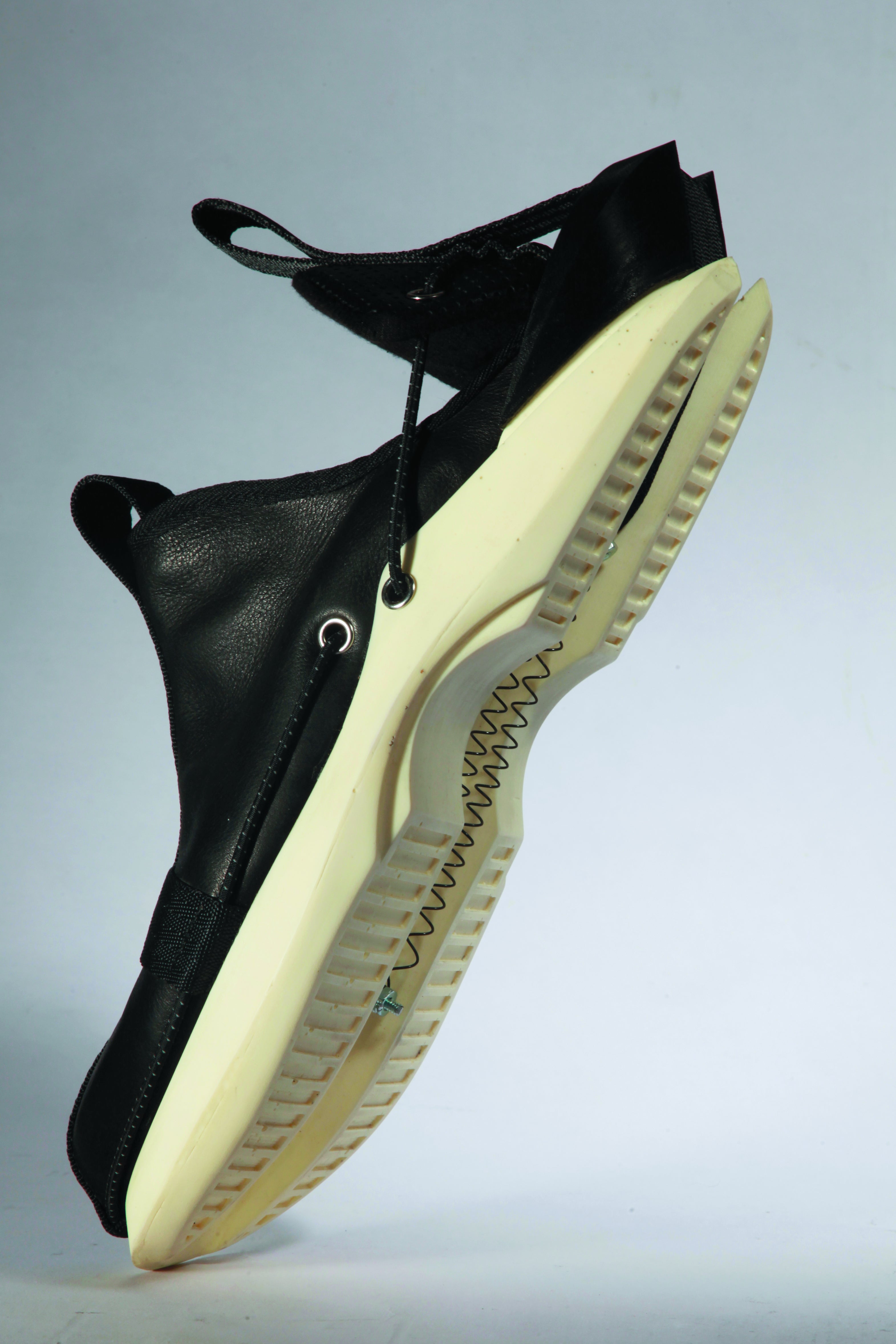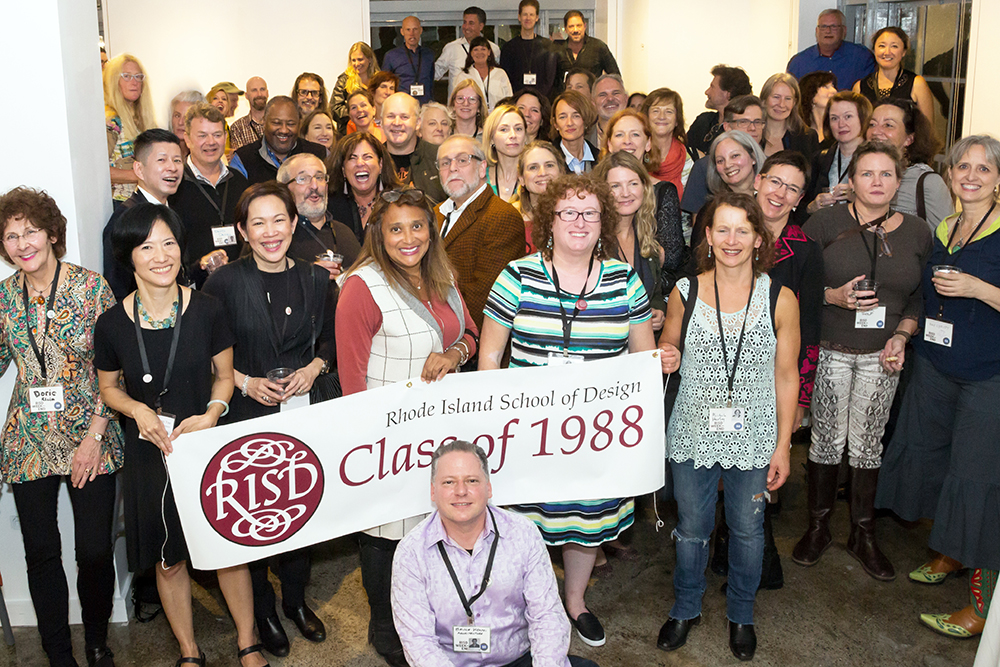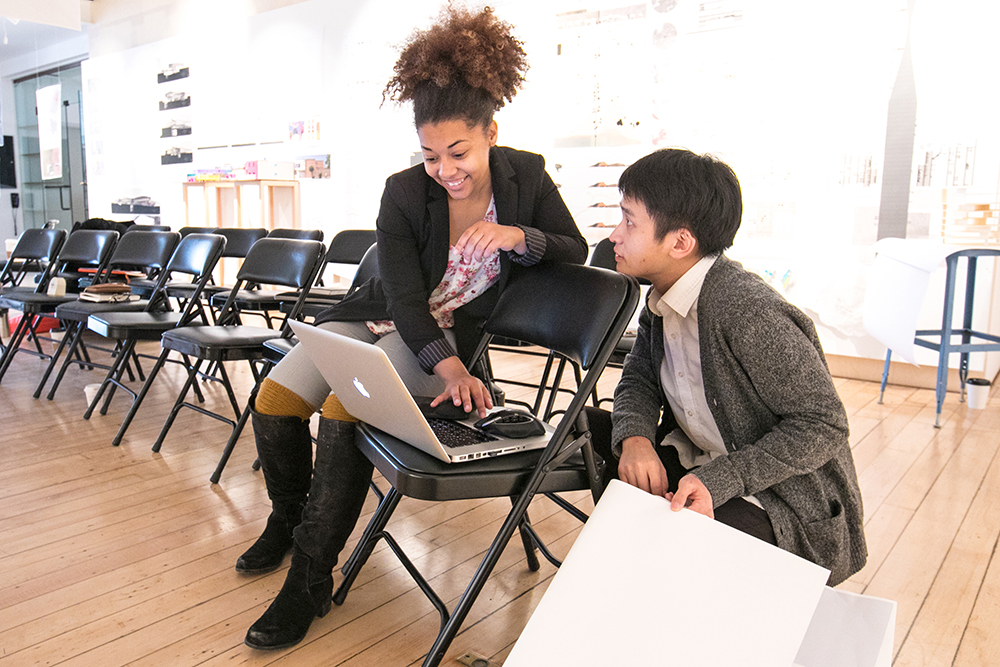
Future Designs
A studio course finds new uses for advanced materials.
What if you could design a key that changed color once you had locked the door? Or a crash test dummy that emitted light where it was injured? Or a hands-off shoe that automatically enveloped the foot? RISD students have designed all of these creations, and more, in an advanced studio course known as CATALYST that finds new uses for advanced materials.
Peter Yeadon, the RISD industrial design professor who runs CATALYST, has been interested in advanced materials—smart, nano, biotech—for at least two decades. Trained as an architect, with a practice in New York City, Yeadon was always drawn to “forward-looking visions for architecture and design, especially the many modernist manifestos that envisioned other possible futures that would be technologically driven.”
Yeadon has been teaching a version of CATALYST for two decades and has seen rapid advances in so-called “smart” materials that react to their environment and do cool things such as glowing, sensing, changing shape or converting one kind of energy into another.
“I’ve been encouraging the creative students at RISD to engage in the conversation around what this stuff might be used for in the future,” says Yeadon. “What other possible futures it might enable.”
Yeadon follows a materials-driven approach where he introduces students to several different kinds of materials and then asks them to use one to create a project that addresses an issue they are invested in. The resulting prototype could be as small as a tiny sensor or as vast as an entire architectural environment.
Nothing delights Yeadon more than a student applying the knowledge and skills they gained in the studio out in industry. For Kait Schoeck 13 ID, her CATALYST project involved working with a memory alloy, a material that changes shape to create an artificial muscle that acts as a power assist for astronaut gloves, which are famously stiff and unwieldy. Woven into the glove is an artificial muscle that contracts to help grab objects. Schoeck went to work for Microsoft, which was then designing its Surface Book laptop, whose screen detaches to become a tablet.

“Kait actually cut the wire out of her RISD prototype to show how this actuator could release the laptop screen,” says Yeadon.
Schoeck says taking Yeadon’s studio course “helped me learn that there is a whole world of materials that exist that can meet the needs of products without having to engineer them from the ground up. Learning about a material first and then finding a problem for it to solve ... opened my eyesto innovating around special material properties, and pushing boundaries of material creation.”
Jeff Shen 19 ID created a hands-off shoe that opens when the wearer steps on a mat and closes around the heel when they step off, thanks to a shape-memory alloy spring on the sole of the shoe. Shen, now a designer at Puma, says his studio work taught him to “respect and trust the process.”
“In my industry, we tend to jump into the design to create a presentable sketch as quickly as possible, because of the timeline pressure. I often think about what I learned in these classes to remind myself to take slower and longer exploratory processes at the beginning.”
Yeadon has taught iterations of CATALYST at Cornell and Ewha Womans University, in Seoul. What makes teaching different at an art school is that the students are also makers.
“We value making at RISD, so it’s enabled us to pursue tangible objects,” says Yeadon. That also presents certain challenges since unlike a university, where there might be a nanotech lab next door, RISD relies on partnerships with external organizations.
These partnerships have been mutually beneficial. The University of Rochester, for example, mixed up a batch of a polymer for RISD that changes shape dramatically and can move something a thousand times its own weight.
“That’s a great example of us working directly with researchers,” says Yeadon. “For them it had value because our students could demonstrate possible applications with this substance beyond the biomedical.”
Yeadon is already lining up potential materials for the 2024–2025 academic year, including a fiber that changes color in response to different contaminants in the environment.
Words by Judy Hill. Photos courtesy of Jeff Shen.



